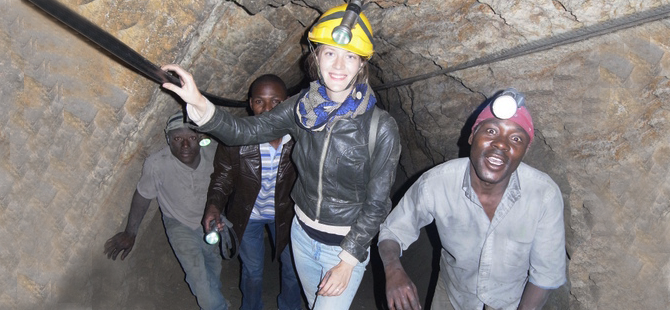African Mining Booms and Local Welfare
Project 1: Local Industrial Shocks and Female Empowerment
Investigator: CDEP Affiliate Anja Benshaul-Tolonen
Can industrial development empower women? This is the first paper to explore the causal effects of a continent-wide exogenous expansion of an industry on female empowerment. The paper uses the recent rapid increase in gold mining in Africa as a quasi-experiment. The identification strategy relies on temporal (before and after mine opening) and spatial (distance to mine) variation, as well as exogenous variation in the price of gold in a difference-in-difference analysis. Using a large sample of women and children living within 100 km of any gold mine, the analysis shows that the establishment of a new mine increases income earning opportunities within the service sector by 41%, makes a woman 23% less likely to state a barrier to healthcare access for herself, and decreases women's acceptance rate of domestic violence by 24%. I exclude the possibility that effects are driven by increased schooling attainment made possible by investment in schooling infrastructure, or that service jobs are limited to prostitution. I cannot rule out that urbanization is part of the mechanism. The findings are robust to different assumptions about trends, distance, and migration, and withstand a novel spatial randomization test. The results support the idea that entrenched norms regarding gender can change rapidly in the presence of economic development.
https://www.journals.uchicago.edu/doi/abs/10.1086/723215?journalCode=edcc
Project 2: Extractive Industries, Production Shocks and Criminality: Evidence from a Middle-Income Country
Investigators: Sebastian Axbard, Jonas Poulsen, and CDEP Affiliate Anja Benshaul-Tolonen
The role of extractive industries for development is highly debated. A large literature focusing on countries with weak institutions has shown that such industries can spur conflict and war by providing appropriable resources. This study investigates whether this relationship holds true later in the development process. More specifically, we examine whether the extensive mining industry in South Africa affects local property and violent crime. To estimate the causal effect, our empirical strategy exploits local production changes caused by fluctuations in international mineral prices. In contrast to earlier studies, we find that an increase in mining activity lowers the local crime rate. Several tests suggest that this effect is driven by better income opportunities, affecting the opportunity cost of engaging in criminal activity. In order for this effect to materialize, local institutional quality needs to be sufficiently high. If such conditions are met, the appropriation channel emphasized in the earlier literature is dominated by the change in opportunity costs of crime.
https://www.sciencedirect.com/science/article/abs/pii/S0095069621000905

